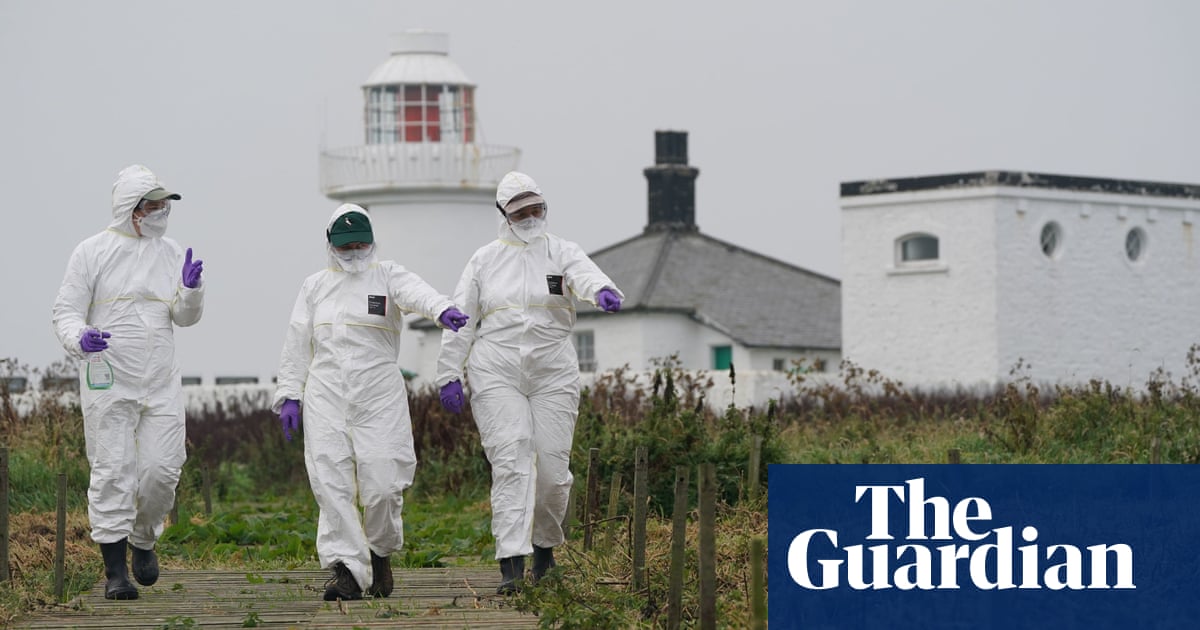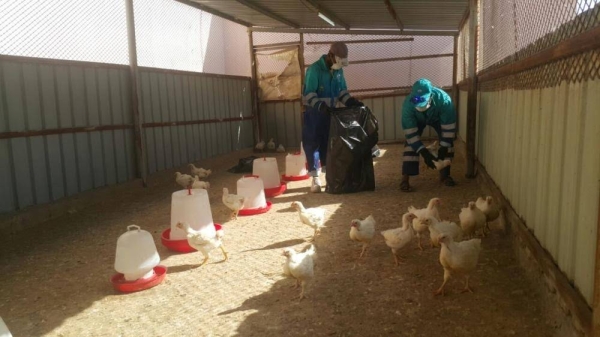
Avian flu has devastated seabird colonies at sites across England, Wales and Northern Ireland this year, the National Trust said, as it called on the government to coordinate detailed and long-term monitoring of the crisis.
It said more than 7,000 seabirds had died of the disease at five of its sites in 2023. Only one of its sites was affected in 2022.
“It is absolutely devastating for these birds,” said Ben McCarthy, the trust’s head of nature conservation and restoration ecology. “It is really tough for the rangers. It is upsetting to see so much death around you.
He said that on the Farne Islands in Northumberland, “quite literally a herring gull fell out of the sky beside me”.
“It is an extraordinary experience, really quite devastating, to see the scale of the mortality,” he said.
McCarthy said avian flu had added to the extreme pressure seabirds were already under because of climate change.
Government action on the disease was necessary, he said, but it had to be part of a bigger picture. “We do need the government to take bolder, stronger and more urgent action around the existential challenges of things like climate change and the nature crisis,” he said.
“Very detailed and long-term monitoring” of avian flu needed to be coordinated by the government and its agencies, he said.
The government had got off to a “bit of a slow start”, he said. “But we are now getting in sync with each other … My concern is that the effort is sustained.”
McCarthy said the trust had released bleak, “very depressing” figures for its sites.
At Long Nanny in Northumberland, home to Britain’s largest mainland colony of Arctic terns, James Porteus, an area ranger, said it was “absolutely heartbreaking” to see so many birds die.
Rangers began seeing signs of the disease in late June and have collected 1,066 dead Arctic tern chicks (roughly 40% of the population) and 263 adults (at least 8%).
“This year’s losses could take years to recover from,” he said. “And that’s before we consider how this indiscriminate disease might impact the colony once again next year.”
At the Farne Islands there were fewer dead birds than last year (down 39%), which Harriet Reid, also an area ranger, said was partly down to regular pick-ups.
“Removing the seabirds as soon as we find them does seem to have made a difference,” she said. “But we do need to rapidly understand what more we can do to protect these precious seabirds.”
Last year, guillemots and kittiwakes were most affected, she said. This year it is kittiwakes, large gulls and Arctic terns.
At Cemlyn in north Wales, more than 1,200 dead birds were collected, of which 711 were Sandwich terns and the majority, 77%, were chicks.
Chris Wynne, a senior reserves manager for the North Wales Wildlife Trust, said Cemlyn was one of the UK’s most important sites for Sandwich terns.
“Last year our seabirds escaped bird flu, so it has been really distressing to see its impact here over the past few months.”
In South Wales, on the Pembrokeshire coast, hundreds of dead birds were washed up in July because of avian flu. At Brownsea Island in Dorset, 650 Black-headed gulls, Common terns and Sandwich terns died with the vast majority being chicks or juveniles.
In Northern Ireland, rangers collected 21 dead Common terns from Cockle Island, a breeding colony just off the coast, and more birds washed up at Cushendun, White Park Bay and Runkerry over the summer.
A glimmer of good news comes from Blakeney Point on the north coast of Norfolk, home to an important breeding colony of Little terns.
It appears to have escaped the disease with it being a ‘“good” year for a seabird that had previously been struggling due to foxes, rats and birds of prey as well as disturbance from people and dogs, the trust said.
Christine Middlemiss, the UK’s chief veterinary officer, said: “We recognise that the current outbreak of highly pathogenic avian influenza poses a significant threat to the UK’s wild bird populations and share the concerns about the impact on breeding populations, particularly seabirds that nest closely in large numbers.
“Dealing with disease in wild animals that are frequently on the move is extremely difficult globally but we have been working very closely with partners on this issue since the impacts on wild birds started to become apparent and we keep the outbreak in these populations under close review.”












